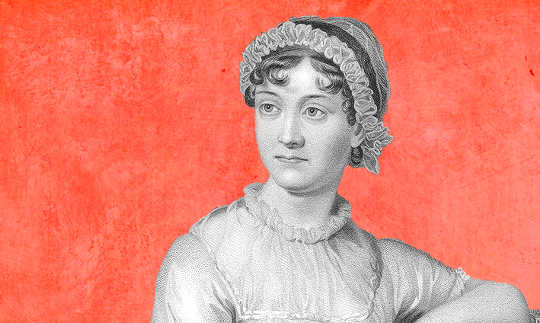
Gresham College
It is a truth universally acknowledged that two centuries on from the death of Jane Austen, the enthusiasm for her work and the Regency world she represents is more alive than ever. Austen herself might marvel at this. She had to buy her first manuscript back from a publisher because it came to nothing, and published anonymously during her lifetime. Yet so many people still feel a connection to her and her writing.
Towards the end of June, a charity auction for the Royal Society of Literature included handwritten notes by authors such as Margaret Atwood, Kazuo Ishiguro and Ian McEwan, all musing on their relationship to Austen and the impact she had on their work. Atwood recalled that at the age of 12 she would have liked to have been able to rebuff her gym teacher in the same way Elizabeth Bennet did to Lady Catherine de Bourgh.
I especially liked the scene in which Elizabeth Bennet stands down Lady de Bourgh. I longed to do the same to my gym teacher, but occasion never offered.
Austen’s characters offer so much more to her readers than romance, and this is part of her enduring appeal.
Across her six novels, short epistolary offerings and miscellanea, she invented a variety of characters – hero and heroine, sidekick and enemy – for audiences to find a kindred spirit in and be entertained by. Some may favor the principles of Elizabeth Bennet or the brooding loyalty of Fitzwilliam Darcy in Pride and Prejudice, others the overactive imagination of Catherine Morland and endearing sarcasm of Henry Tilney in Northanger Abbey.
Austen’s characters appear as real people on the page with real passions and flaws who experience real learning curves. They could be the reader’s friends and acquaintances – even in Regency form. Who could not feel for Fanny Price when, in Mansfield Park, Mary Crawford fails to apologize for monopolizing the time of the hero Edmund Bertram, writing off her thoughtlessness with:
Selfishness must always be forgiven, you know, because there is no hope of a cure.
It feels even better for the reader to see Fanny triumph, because of the familiar way Austen writes. It is almost as if she invites the reader in to participate, letting them in on secrets and making astute comments that hold true two centuries later.
A tale as old as time
It isn’t only the characters that ring true for Austen’s devoted audiences. The fundamental plots of the novels have a timeless quality to them that translates well for the modern reader.
Take Pride and Prejudice. On first reading, it might not appear so: how many families with five daughters today worry about marrying them off to secure the family home? Yet the uncertainty of the future and worries about financial security are timeless. The lesson of relying on first impressions not only permeates this novel, but several others (the Crawfords in Mansfield Park, Willoughby in Sense and Sensibility and Frank Churchill in Emma, to name but a few). For many, the well-meaning but interfering relatives are also very relatable.
{youtube}dBgaO9Va5cA{/youtube}
Feast for the eyes
This also rings true in the way that Austen adaptations to screen are always so popular. The pinnacle of this, which consistently has a place on lists of best adaptations, is the 1995 BBC adaptation of Pride and Prejudice by Andrew Davies. Besides catapulting Colin Firth to heartthrob status, Davies, over the course of six episodes, cemented Austen’s status as writer of loveable heroines who are strong and unashamedly intelligent.
The adaptation, lauded by fans because of its adherence to the book, saw Davies communicate elements of Austen sometimes missed in reading that were reinforced on screen. He captured – as Austen intended – the humour, the genuine despair of financial worry and the uncertainty of young women trying to make their way in the world. It was a faithful Regency drama made for a modern audience, enthralling people even more with Austen.
What better way to prove the timelessness and universality of Austen’s novels than place her characters in a modern setting? Pride and Prejudice became a fictionalised newspaper column, then a book, then a hugely successful romantic comedy in the form of Bridget Jones’s Diary – the sequel to which, The Edge of Reason, is loosely based on Persuasion.
Lovers of 1990s teen comedy can get their Austen fix through Clueless, in which Alicia Silverstone fulfils the role of matchmaking and interfering Emma Woodhouse. Whether audiences want her characters in Regency or modern dress, they just want more Austen.
Pride of place
Fans are able to reinforce their love for Austen’s books by immersing themselves in the places linked to her. Whether this is directly, by visiting places such as the Jane Austen’s House Museum at Chawton, or indirectly, through exploring historic houses such as Lyme Park, immortalised as the exterior of Pemberley, from the 1995 Pride and Prejudice adaptation, we feel like we have a piece of Austen.
Our love for Jane Austen runs beyond celebrating her anniversaries. In the two centuries since her death, her position has been secured as a national treasure. The world presented in her novels and translated elsewhere enthral, not only driven by nostalgia for the Regency glamour of empire-line dresses and etiquette, but also by the startlingly relatable characters and social comment.
And when did I begin to cultivate an enduring love for Austen? To quote Mr Darcy:
![]() I cannot fix on the hour, or the spot, or the words, which laid the foundation. It is too long ago. I was in the middle before I knew that I had begun.
I cannot fix on the hour, or the spot, or the words, which laid the foundation. It is too long ago. I was in the middle before I knew that I had begun.
About the Author
Lizzie Rogers, PhD Researcher in Women's History, University of Hull, University of Hull
This article was originally published on The Conversation. Read the original article.
Related Books
at InnerSelf Market and Amazon

























